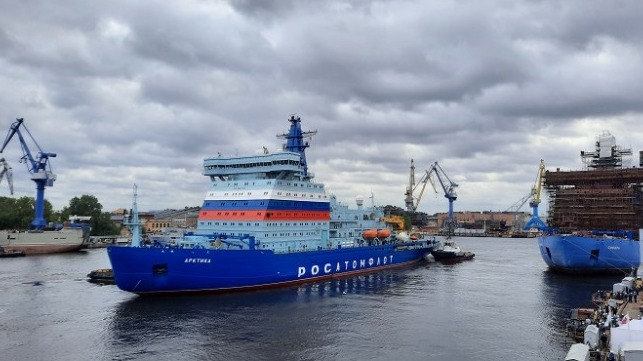Russia Begins Naming its Icebreakers After Soviet Cities

Russia is on course to modernize and expand its powerful fleet of nuclear-powered icebreakers. Last week, the Russian President Vladimir Putin attended the keel-laying ceremony for the seventh nuclear icebreaker in the Project 22220 series. The event took place at Baltic Shipyard in St. Petersburg, and Putin emphasized that the new vessel will help enable more trade along the Northern Sea Route.
The vessel will be named Leningrad, a change from its initial proposed name Sakhalin. It becomes the second icebreaker to have its name changed from a geographical location in the Arctic to instead carry the Soviet name of a Russian city.
The shift in naming policy began last fall after Putin approved the renaming of Kamchatka (the sixth vessel in the series) to Stalingrad, after the Soviet name for the city of Volgograd. The name is highly symbolic in Russian political iconography: Stalingrad was the scene of World War II’s deadliest battle, and nearly 500,000 Russians lost their lives there in five months of fighting.
The proposal for the change came from Governor of Volgograd Andrei Bochkarev, who called it “ important for the preservation of the memory of the bravery of protectors of Stalingrad during the Great Patriotic War,” as Russia refers to World War II.
Similarly, naming the new icebreaker Leningrad reflects the history of St. Petersburg during the Soviet era. The keel-laying ceremony coincided with the 80th anniversary of the end of the Nazi siege of Leningrad, the city’s former name from 1924 to 1991.
The nuclear icebreaker Leningrad will be 173 meters long with a displacement of 33,540 tons. Its main source of power will be one RITM- 200 reactor with a capacity of 60 Mwe (megawatt electric).
Russia launched Project 22220 to provide more icebreaking capacity for the Northern Sea Route, which is a top priority for Putin. Three vessels are already in operation, with another three expected to join service by 2030.
